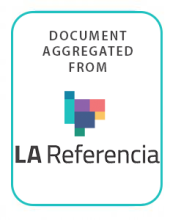Land Library
Welcome to the Land Portal Library. Explore our vast collection of open-access resources (over 74,000) including reports, journal articles, research papers, peer-reviewed publications, legal documents, videos and much more.
/ library resources
Showing items 1 through 9 of 66.Presentation on Measurement of the Costs of Land Degradation in the Mountains of the Republic of Tajikistan delivered during the CACIP Regional Consultation Meeting held in Dushanbe, Tajikistan.
In response to the severe economic, social, and environmental costs of degradation across Tunisia’s rangelands, the International Center for Agricultural Research in the Dry Areas (ICARDA) has worked with the General Directorate of Forestry (Direction Générale des Forêts, DGF) to draw up a new pa
Universidad Nacional Agraria La Molina. Escuela de Posgrado. Maestría en Producción Animal
Es indudable que en la actualidad estamos viviendo un fenómeno climático llamado en tiempos modernos como “Cambio Climático”, cuya evidencia científica es irrefutable.
El presente informe describe seis problemas vinculados al cambio y variabilidad climática, así como ejemplos de proyectos ejemplares de adaptación y educación referidos a dichos problemas.
This document presents the Strategic Plan of the International Center for Agricultural Research in the Dry Areas for the period from 2017 to 2026.
Non-tropical dry areas cover over 40% of the world’s land surface with a growing population of more than 2.5 billion people. These people grow 44% of the world’s food and keep half of the world’s livestock, yet one in six live in chronic poverty.
Las simulaciones del modelo HadCM3 fueron de las primeras disponibles para el análisis de proyecciones futuras, reflejándose en la literatura que describe principalmente variables de temperatura y precipitación para Sudamérica.
The impact of climate change on drought main characteristics was assessed over Southern South America. This was done through the precipitation outputs from a multi-model ensemble of 15 climate models of the Coupled Model Intercomparison Project Phase 5 (CMIP5).





